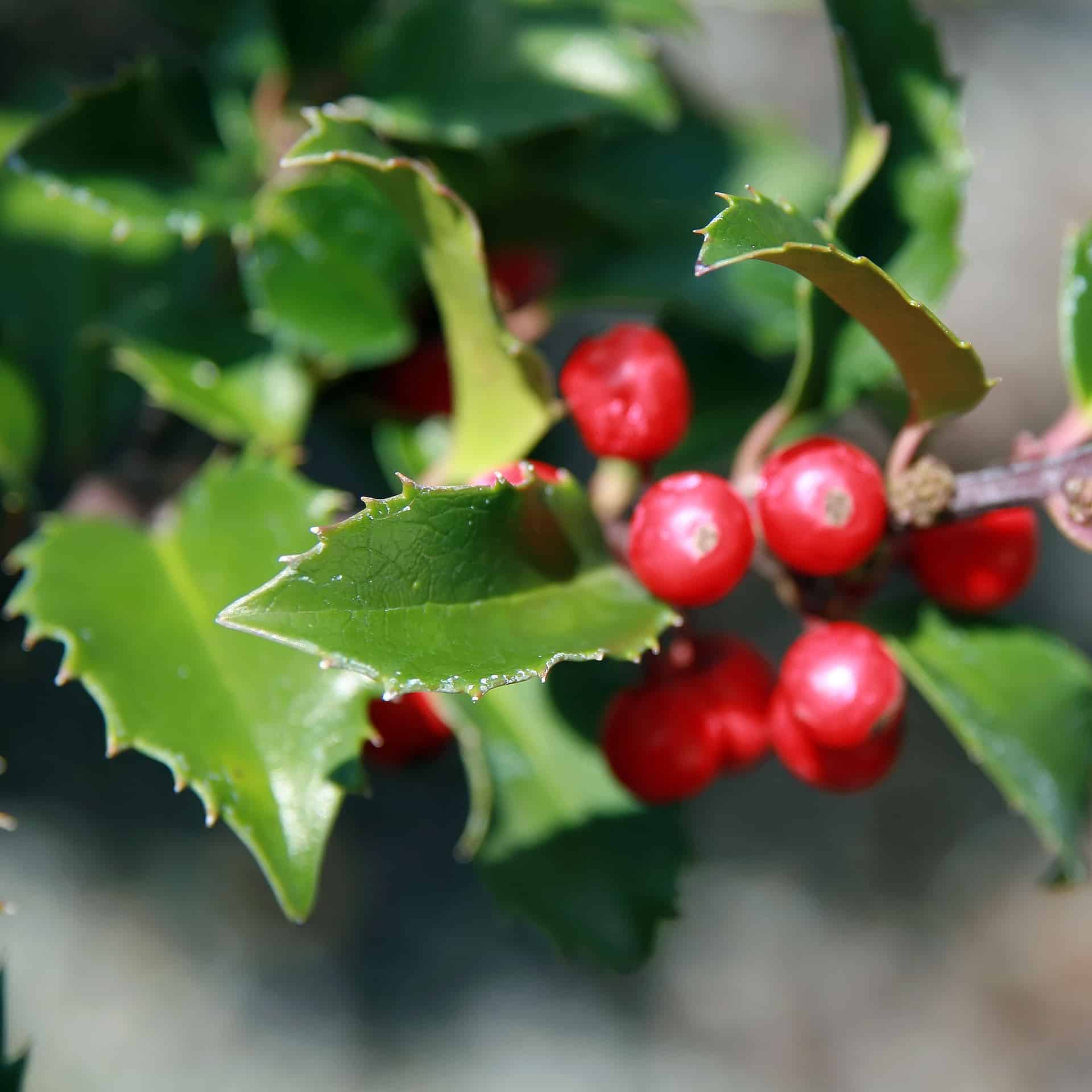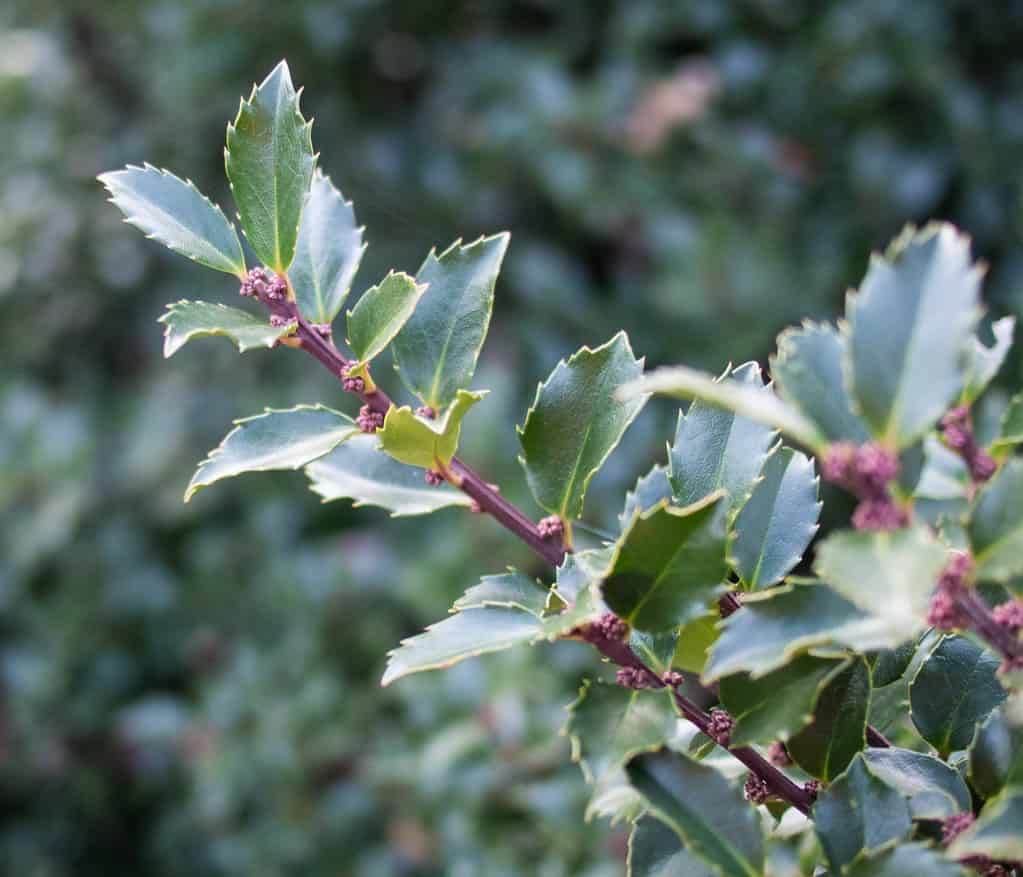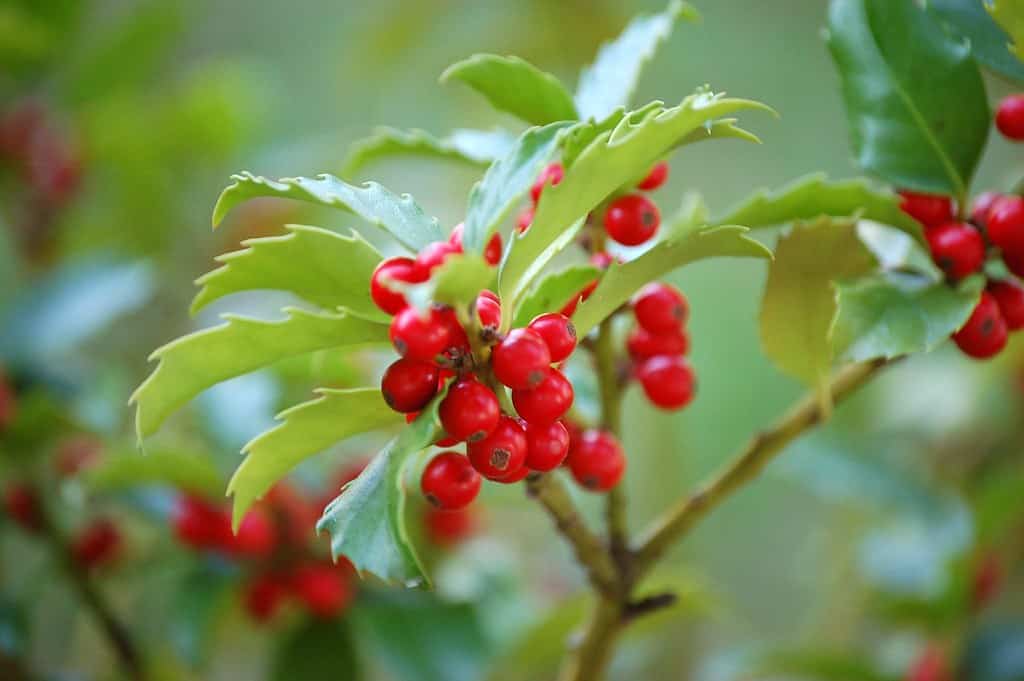No products in the cart.
The holly always comes up for a good reason when decking the festive halls over Christmas.
Holly has the most stunning leaf color and berries; one cultivar that stands out is the Blue Princess holly.
It makes for a beautiful shrub in the landscape, or you can grow her as a hedge. Today we will help you care for this holly to ensure it adds winter interest to your garden and home.
Plant Name: Ilex × meserveae Blue Princess
Other Name: Blue Princess Holly Shrub
Plant Type: Broadleaf Evergreen Shrub
Native Areas: Nursery Hybrid
Light Requirement: Full Sun to Partial Shade
Watering: Moist Soil
Fertilizer: Organic Fertilizer
Toxicity: Mildly Toxic to Humans and Pets
Temperature: Down to -10°F
Propagation: Cuttings
Growth: 15 feet tall and 10 feet wide
Soil Type: Acidic Neutral Soil
USDA Plant Hardiness Zones: 3-7
More About Blue Princess Holly

The Blue Princess holly or Ilex x meserveae Blue Princess are hybrid female plants of the Ilex aquifolium and Ilex rugosa. She needs the male pollinator Blue Prince holly tree close by for pollination, to take.
When pollinated, she produces bright red berries in winter used as a holiday decoration. The Blue Princess has a moderate growth rate of two feet per year. She has glossy blue-green leaves that are spiny with purple stems.
You see her covered with white flowers in spring, followed by the berries that remain throughout winter. The best time to plant the Blue Princess holly is in fall or spring, and she is a winter hardy shrub.
But it helps to plant in early fall, allowing her roots to develop before the frost and heat in summer.
Blue Princess Holly Care Guide
The important thing to remember with your female plant is to ensure you have the Blue Prince nearby to develop those gorgeous red berries in the garden. You can grow her as holly bushes or as a standalone in the landscaping to add interest throughout the year.
The Best Soil For Your Blue Hollies

For the Blue holly, the important thing is well-drained soil. The Blue Princess holly shrub can tolerate different soils but prefers a slightly acidic to neutral soil pH between 5.0 to 7.0.
Lighting For The Blue Princess Holly
You can plant your Blue holly in full sun to partial shade. If you live in warmer climates, protect her from the afternoon sun.
Watering Your Blue Holly
Once you plant your young outdoor plants, you must provide them with regular watering until the root system becomes established.
As your Blue holly matures, she will need deep watering to moisten the soil during the first growing season.
You may find that your Blue holly needs more water during extreme heat but don’t overwater your shrubs.
Temperature and Humidity
The lowest temperature your Blue Princess holly shrub can tolerate is down to -10°F.
The Blue Princess is a cold hardy plant, but prolonged exposure to freezing temperatures can weaken your plants.
It helps to add some mulch around the root system to keep it protected. Another important thing is to keep it sheltered from the cold winter winds.
Fertilizing The Extensive Root System
While the Blue Princess prefers well-drained soils and needs some winter protection in the growing zone where it is freezing, she is a low-maintenance plant for feeding.

You do not want to give her too much nitrogen as it can prevent the fruiting of those attractive red berries.
We recommend an organic feed made for holly trees. Also, add some compost to the soil when planting new plants. When planting more than one Blue Princess, they form a dense hedge.
Pruning Blue Princess Hollies
The fantastic thing is you can prune your Holly shrubs to control the height. But, of course, the best time to prune depends on how they look.
You can do pruning in early winter to take the cut stems indoors with the red berries to use for decoration.
You even find gardeners pruning their Blue Princess holly in late winter to let the dark foliage and berries stand out more.
To help get a staggering depth, remember that your female plant blooms on the old wood.
So, the later you prune, the less produce fruit you get in the following year. It helps to balance it to get the desired shape and size.
Overwintering Ilex x Meserveae
It helps to protect your new plans from the cold winter living in the hardy growing zone where it is freezing. While you can spray your Blue Princess with anti-desiccant in late fall, it helps to protect her with some burlap wrapping around a framework.
Consider some winter protection in growing zones 4 and 5.
Tips To Help Make Your Blue Princess Bloom
The Blue Holly’s biggest attraction is the red berries, not the blooms. Still, if no berries are produced, it can result from the following:
There is no pollination taking place as there is no male plant nearby. Hence, it helps to plant the Blue Prince nearby to ensure the production of berries.
You may have pruned your shrubs too much or at the wrong time. As the blooms develop on the old wood, you may have to remove them. It helps to reduce your harvesting of fruits or not to cut at all for a year.
Propagating Your Evergreen Shrub
The Ilex x meserveae Blue Princess propagates easily using cuttings you take in early spring or summer.
Take an eight-inch softwood cutting of 1/4 inch below one of the leaf nodes with your pruners.
Dip the cut end into some rooting hormone.
Choose container sizes suitable for your cuttings and fill them with some potting medium with sand.
Embed the cutting and keep it in moist soil until the roots develop; this can take a few weeks.
Once the roots develop, you can transfer them to a bigger container or directly into the garden.
While some people recommend planting seeds, we at Plantly do not recommend this as the process is long.
Blue Holly Varieties
The name Blue Holly comes from the blue-green foliage, and there are a few other hollies you can grow in the garden seen here:
‘Blue Girl’ (Ilex x meserveae Blue Girl)
For a winter hardy shrub, you can grow in zones 5 to 9; we recommend the Blue Girl. She can reach up to eight feet and produce red berries with purple stems.
‘Blue Boy’ (Ilex x meserveae Blue Boy)
 Ilex x meserveae Blue Boy @flickr
Ilex x meserveae Blue Boy @flickr
Here we have the male pollinator of the Blue Girl that does not produce berries but does have purple stems with blue-green foliage. It forms a dense hedge in the garden.
‘Blue Maid’ (Ilex x meserveae Blue Maid)

If you want fast-growing shrubs, the Blue Maid is ideal. It reaches up to ten feet with a spread of eight feet, producing red berries.
‘Blue Stallion’ (Ilex x meserveae Blue Stallion)
 Ilex x meserveae Blue Stallion @flickr
Ilex x meserveae Blue Stallion @flickr
The Blue Stallion is a fast grower and a male pollinator growing up to 12 feet tall with shiny dark green-blue foliage.
Blue Princess Holly Common Diseases and Pests
As with most other plants, you can find some common problems with the Blue Princess holly. These include whiteflies, scale, spider mites, and holly leaf miners.
The holly leaf miners cause trails of brown or blue on the leaves, and the best is to treat it with a foliar pesticide to help control leaf miners.
Spider mites cause discoloration on the leaves, while scale leaves the foliage with hard crust patches. You can spray on the foliage with insecticidal soap or neem oil.
Disease concerns are mostly fungal problems, including leaf spots, powdery mildew, and tar spot. Powdery mildew looks like baby powder on the leaves, and other diseases leave small black or yellow-to-white spotting.
You can treat all of the above with a fungicide spray and water at the base instead of over the foliage to prevent it from happening.
Other Problems With You Ilex x Meserveae Blue Princess
Some other common problems can arise with your dense shrub:
Yellowing leaves can result from too high alkaline soil as the holly prefers acidic soil. To counteract the occurrence, it helps to feed your holly an acid fertilizer or mulch with some pine needles.
A leaf drop can result from a spot fungus, and it is too late to use a fungus treatment. The good news is your tree can recover by itself.
Browned leaves to dead branches result from winter injury, and you can remove them to trim back your shrubs down to green wood.
Frequently Asked Questions
The Blue Princess is the female plant, while the Blue Prince is the male pollinating shrub needed to produce the berries.
The plants can remain in the garden under the right growing conditions for up to 100 years.
The shrub grows a taproot that moves directly down into the ground with smaller roots spreading out, and it can become invasive grown close to other plants. Hence, the roots deprive other plants of nutrients.
You can grow other low-growing shrubs like your Moon Shadow euonymus, cotoneaster, or blue and gold junipers to contrast the green holly plants’ foliage.
You need not look far or leave your home to search for the Blue Princess, as Plantly has a collection of hollies to browse through and buy.
Whether you want to buy, sell, or simply reach out to other plant enthusiasts, Plantly is the right place to be!


